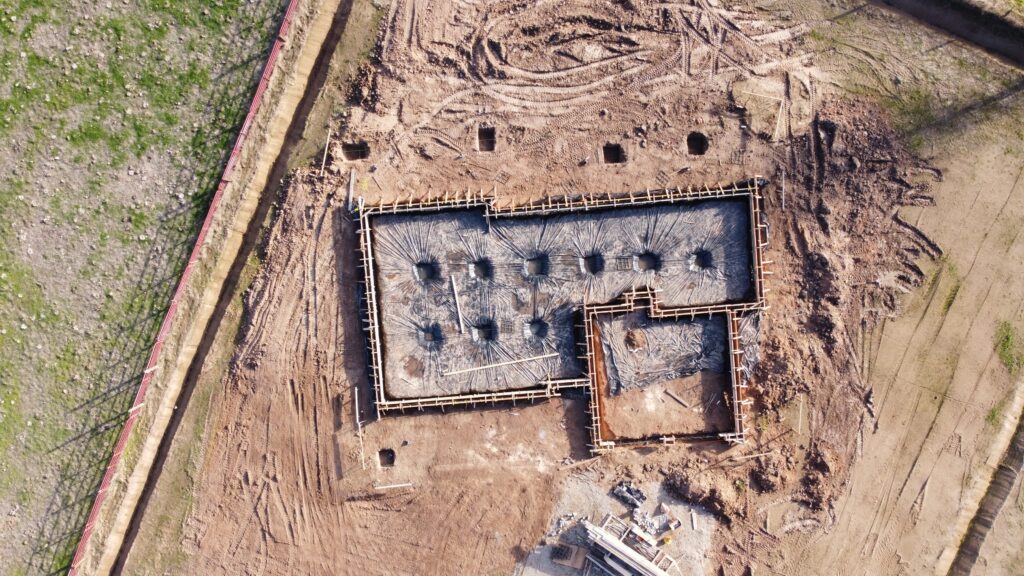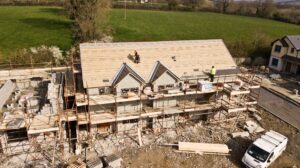
Navigating the Construction Maze: Why Building Permits are Unavoidable
Embarking on a construction project is an exciting endeavor, but the path is often laden with regulatory requirements, including the need for building permits. These permits, mandated by California laws, ensure that new construction, remodeling, and significant repairs adhere to local building and zoning codes. While the permit process can be perceived as exhaustive, expensive, and potentially affecting property taxes, it is a crucial safeguard for building safety.
Property owners may sometimes be tempted to forgo the permitting process, hoping to sidestep its complexities. However, this decision carries significant consequences. Unpermitted work can lead to building safety issues, trigger code enforcement actions by local authorities, and result in fines and penalties.
This comprehensive guide aims to shed light on the intricacies of building permits in California, exploring exemptions, the possibility of retroactive licenses, and the potential repercussions of unpermitted work. By understanding the importance of compliance and the risks associated with bypassing the permit process, property owners can make informed decisions, ensuring the safety of their constructions and mitigating legal ramifications.

In California’s construction realm, building permits stand as indispensable prerequisites, mandated by state laws to regulate new construction, remodeling, and major repairs. These permits ensure that all building projects conform to the intricate web of local building and zoning codes. While the process may appear burdensome, its significance must be balanced.
- Adhering to Local Regulations: California laws strongly demand strict adherence to local building and zoning codes. Regardless of the nature of the construction project, whether it involves groundbreaking new constructions or substantial renovations, building permits stand as essential prerequisites.
- The Exhaustive Process and Added Expenses: It’s crucial to acknowledge the prevalent perception that obtaining permits can be exhaustive. This perception often stems from the intricate steps and requirements of the permit acquisition process. Simultaneously, concerns linger regarding the added expenses of obtaining these permits, creating a delicate balance between regulatory compliance and financial considerations.
- Property Tax Implications: A brief exploration delves into potential property tax implications for permitted construction projects. While obtaining permits may influence property tax considerations, it introduces property owners to a multifaceted decision-making process. Understanding these considerations becomes paramount as property owners weigh the implications of their decision to obtain or forgo building permits.
While the temptation to bypass the permit process may arise, particularly to mitigate perceived challenges, the consequences of unpermitted work can be severe. Unapproved projects may jeopardize building safety and invite code enforcement actions. To delve deeper into these consequences and explore potential exemptions, the subsequent sections of this guide provide valuable insights for property owners navigating the intricate landscape of construction regulations in California.

Property owners may encounter instances where obtaining building permits seems like a daunting hurdle in the intricate construction world. However, certain exemptions and unique solutions like retroactive permits offer alternatives for those seeking flexibility within the regulatory framework.
In considering exemptions for some instances, the exploration takes us into minor home improvements and cosmetic changes. Recognition of specific projects falling under this umbrella exists, where endeavors like repainting, adding kitchen cabinets, or installing floor coverings may be exempt from the standard permit requirements. This nuanced understanding allows property owners to discern the boundaries of exempted activities and make informed decisions in their construction pursuits.
A spotlight is cast on Los Angeles’ progressive policy that extends a lifeline to landlords – the ability to obtain retroactive building permits. This policy allows for a formalization process even after the completion of construction work. Conditions for obtaining retroactive permits come into focus, underscoring the critical importance of meeting established standards and regulations. Even in retrospect, adherence to these benchmarks remains non-negotiable in pursuing retroactive approval.
As we delve into the realm of flexibility and compliance, there’s an acknowledgment that exemptions and retroactive permits indeed offer flexibility, especially in specific scenarios. However, this newfound flexibility is accompanied by a sobering emphasis on balance. Property owners are urged to strike a delicate equilibrium, ensuring that flexibility in construction endeavors doesn’t compromise the unwavering commitment to meeting safety, regulatory, and legal standards.
While exemptions provide a pathway for specific projects to proceed without the traditional permit process, the option of retroactive permits introduces a unique avenue for formalizing unpermitted work. However, property owners must exercise caution, ensuring the work aligns with local codes and standards to avoid potential repercussions. The subsequent sections delve into the consequences of unpermitted work and the steps involved in obtaining retroactive permits, offering valuable guidance for property owners navigating the intricacies of construction regulations.
Undertaking construction without the requisite building permits may seem like a shortcut to avoid bureaucracy and expenses, but the repercussions can be substantial. Please obtain proper licenses to prevent a cascade of consequences that impact both the construction process and the property owner’s legal standing.
- Building Safety Issues: The discourse begins with a comprehensive discussion of the inherent risks and hazards of unpermitted construction projects. These risks pose potential threats to the immediate occupants and the structure’s overall integrity. In this context, the critical role of building permits becomes apparent, acting as a safeguard mechanism to ensure the safety and structural soundness of a building. Through the lens of safety considerations, obtaining permits becomes more than a regulatory requirement; it becomes a fundamental commitment to the well-being of those inhabiting the constructed space.
- Code Enforcement Actions: Navigating further into the consequences of unpermitted work, there’s an overview of the actions taken by local building authorities in response to such endeavors. This involves a closer look at the meticulous inspections and inquiries initiated by city inspectors to assess the level of compliance with established regulations meticulously. These actions are proactive, ensuring that construction projects align with safety standards and adhere to the prescribed codes, ultimately mitigating potential risks and hazards.
- Cease-and-Desist Letters: A spotlight is cast on a specific enforcement tool – the issuance of cease-and-desist letters – to respond to projects that fail inspection. This section explains the purpose of such letters, outlining the immediate requirement to halt ongoing construction work until the necessary permits are obtained. Cease-and-desist letters emerge as a critical juncture in the enforcement process, serving as a clear directive to cease activities that lack the essential approvals, further emphasizing the significance of adhering to regulatory frameworks.
- Orders to Comply: Delving deeper into the repercussions of unpermitted work, there’s a discussion on the potential issuance of orders to comply. This extends beyond projects in progress to completed endeavors that need to meet safety standards. Property owners are confronted with the need for corrective action, compelling them to obtain the required permits within a specified timeframe. Orders to comply underscore the commitment to rectifying non-compliance issues, reinforcing the importance of adhering to established regulations.
- Potential Removal of Work and Fines: The narrative takes a sobering turn as it explores the worst-case scenario – the possible requirement to remove constructions undertaken without the necessary permits. This drastic measure underscores the gravity of non-compliance and the lengths to which authorities may go to rectify unauthorized work. Additionally, an overview of the fines and penalties associated with unpermitted work creates a financial dimension to the consequences. Understanding the potential removal of work and the financial ramifications encapsulates the severity of consequences for those who choose to bypass the necessary permitting processes.
Property owners should be aware that unpermitted work jeopardizes the structure’s safety and invites legal consequences. The subsequent sections delve into the inspection process, the issuance of building permits, and the potential fines and penalties, providing a comprehensive understanding of the risks associated with bypassing the permitting process.

Site Inspection Process: Ensuring Compliance and Safety
In construction, adherence to building codes and regulations is paramount to guarantee any project’s safety and structural integrity. The site inspection process is a critical mechanism local authorities employ to assess compliance with these codes. Understanding this inspection process is crucial for property owners navigating construction projects, especially those without the requisite building permits.
- Inspector’s Property Visit: The initial stage of the site inspection process involves an overview of the city inspector’s visit to the property undergoing construction. This visit is pivotal, serving as the lens through which compliance with building codes is scrutinized. The inspector assumes a crucial role in determining whether the ongoing construction necessitated the acquisition of a building permit, setting the tone for the subsequent phases of the inspection process.
- “Before It’s Covered” Basis: A foundational concept within the inspection process is explained, emphasizing inspections conducted on a “before it’s covered” basis. This approach restricts specific construction elements, notably concrete pouring until designated inspections are satisfactorily completed. This strategic timing ensures that critical components are inspected and verified before being concealed, aligning with maintaining compliance with prevailing codes and regulations.
- Inspection of Critical Elements: Delving more profoundly, the focus shifts to inspecting critical elements integral to construction projects. Examples, such as rebar and anchor bolts, are highlighted as components subject to thorough examination. The objective is clear: to ensure these elements adhere to current codes and standards. Furthermore, the importance of providing tangible evidence of adherence to approved drawings during inspection is underscored, emphasizing the need for meticulous documentation.
- Potential Reopening of Walls: A contingency within the inspection process is explored, particularly scenarios where inspectors may request the reopening of walls. This request is not arbitrary but serves the purpose of comprehensively inspecting concealed elements, such as electrical or plumbing connections. The rationale behind this action is to verify that hidden elements meet the necessary safety and code standards, preventing potential hazards and ensuring the overall compliance of the construction project. This nuanced approach adds layers to the inspection process, ensuring that even concealed aspects undergo rigorous scrutiny.
The site inspection process is a proactive measure to prevent potential hazards and non-compliance issues. Property owners should be prepared for thorough inspections to ensure their construction meets regulations. The subsequent sections delve into the issuance of building permits, the consequences of non-compliance, and potential fines and penalties, providing a comprehensive guide for property owners navigating the complexities of construction regulations.
Local authorities are prompted to take enforcement actions to ensure compliance with building codes and regulations upon discovering unpermitted work. Understanding the subsequent steps in this process, including issuing building permits and cease-and-desist letters, is essential for property owners navigating the complexities of construction regulations.
- Issuance of Building Permits: After discovering unpermitted work, obtaining building permits unfolds with nuanced steps. This involves a meticulous explanation of the procedural intricacies essential for securing permits. An emphasis is placed on the imperative need to fulfill all requirements, ensuring that the construction aligns meticulously with prevailing code standards. This phase underscores the commitment to rectifying deficiencies and formalizing the construction project within the established regulatory framework.
- “Cease & Desist” Letter: A pivotal component in the enforcement arsenal, the cease-and-desist letter, is introduced with clarity on its definition and purpose. This legal directive is issued by inspectors when a construction project is still in progress without the requisite permits. Its primary function is to enforce an immediate cessation of construction activities until the necessary permits are obtained. This decisive measure is a pivotal checkpoint, compelling property owners to promptly address permitting deficiencies.
- Ensuring Compliance with Regulations: The narrative pivots to ensuring compliance with the directives outlined in the cease-and-desist letter. This phase underscores the significance of adhering to the specific instructions provided in the legal document. Failure to comply perpetuates the construction without necessary permits and exposes property owners to heightened legal complications. The emphasis is on the proactive response required to avoid further legal entanglements and the potential consequences of continued construction without permits.
- Orders to Comply for Completed Projects: A contemplation of potential scenarios extends to completed projects that fall short of meeting safety standards. The possibility of receiving orders to comply is introduced, indicating a post-construction phase where corrective action becomes imperative. Property owners find themselves tasked with the responsibility of obtaining the required permits within a specified timeframe. This phase echoes the commitment to rectify non-compliance issues, signaling the final steps in the enforcement process for completed projects that lack essential approvals.
Navigating the enforcement actions involves a commitment to complying with building codes and rectifying any deficiencies promptly. The subsequent sections delve into potential fines and penalties, offering property owners a comprehensive understanding of the risks associated with unpermitted work and the steps required to rectify the situation.

Fines and Penalties for Unpermitted Work: Understanding the Financial Ramifications
Discovering unpermitted work triggers a series of consequences, with fines and penalties being significant financial repercussions. Property owners must be aware of the potential monetary implications associated with non-compliance, ranging from initial code violation fees to escalating penalties for prolonged violations.
The narrative opens with an exploration of code violation fees, a financial repercussion imposed for unpermitted work. The fees, typically falling within the range of $350-$600, are intricately tied to the size and scope of the violation. This financial consequence is a tangible expression of the regulatory response to non-compliance, emphasizing the immediate impact on property owners undertaking construction without the requisite permits. Recognition is given to the potential escalation of these fees to $1200-$1500 if not settled within a prescribed timeframe, commonly set at 30 days.
A subsequent layer unfolds with non-compliance fees, a direct consequence of failing to rectify the illegal work within a specific timeframe, typically 15 days. This phase underscores the urgency associated with compliance, as the potential for additional fees looms if the violation persists beyond the initial stipulated timeframe. Non-compliance fees act as a dynamic element in the financial landscape, escalating the consequences for those who do not promptly address permitting deficiencies.
The discourse deepens with a discussion on escalating late penalties, a financial dimension that may surpass $2000 if non-compliance continues and fees remain unpaid within the specified timeframe. The emphasis is on the critical importance of prompt payment to arrest the financial escalation. Late penalties, with their potential to significantly augment the financial burden, underscore the gravity of the consequences of prolonged non-compliance. Timely resolution emerges as a crucial mitigating factor in navigating the economic fallout of unpermitted work.
In a sobering turn, the narrative shifts to the possibility of pursuing building criminal charges against property owners who persistently exhibit non-compliance and fail to pay fines. This section introduces the legal ramifications and the potential severity of making criminal charges. The contemplation of legal action is a stark reminder of the gravity of consequences for those who neglect to rectify permitting deficiencies and navigate the ensuing financial obligations. Building criminal charges is a last resort in the regulatory arsenal, reflecting the profound legal implications of persistent non-compliance and non-payment of fines.
Understanding the fines and penalties associated with unpermitted work is crucial for property owners aiming to rectify the situation and avoid financial repercussions. The subsequent sections provide insights into the final steps in the enforcement process, emphasizing the importance of building safety and compliance with regulations to mitigate legal consequences.
Final Words on the Permitting Process: Balancing Necessity and Convenience
In the intricate dance of construction projects, the permitting process often emerges as a necessary yet challenging partner. While it may appear as an added layer of bureaucracy, obtaining building permits plays a pivotal role in ensuring a structure’s safety, integrity, and compliance with local building codes. As we draw the curtain on this exploration of building permits and their implications, it’s crucial to reflect on the final words regarding this indispensable aspect of construction.
A fundamental premise in the realm of construction is revisited, highlighting the primary purpose of building permits as a safeguard for the safety and well-being of occupants. Building permits transcend mere regulatory requirements; they serve as a cornerstone in the collective commitment to guaranteeing the safety and structural integrity of constructed spaces. By delineating the parameters of construction activities, permits play a vital role in preventing potential hazards and upholding the overall soundness of structures, reinforcing the intrinsic link between permitting and safety considerations.
The permitting process emerges not merely as a reactive step but as a proactive measure in forestalling potential code enforcement actions. This acknowledgment underscores the preemptive nature of obtaining permits, acting as a shield against subsequent enforcement actions. By navigating the regulatory landscape and securing necessary permits, property owners significantly mitigate the risk of receiving cease-and-desist letters, orders to comply, and the imposition of fines. The strategic acquisition of permits thus becomes a defense against legal complications in the construction journey.
A holistic view of responsible construction practices focuses on positioning the permitting process as an integral and non-negotiable component. Recognition is granted to the pivotal role of compliance with regulations, transcending the procedural aspects of obtaining permits. The emphasis here is on instilling a culture of responsibility in construction endeavors, where adherence to established standards becomes a guiding principle. Prioritizing compliance becomes a legal mandate and a moral imperative, aligning with the broader commitment to ethical and responsible construction practices.
In navigating the complexities of construction without proper permits, a unique solution emerges in the form of retroactive building permits. This avenue offers a retrospective approach for those who initiated construction without adhering to the permit acquisition process. While presenting an opportunity for remediation, the narrative underscores that seeking retroactive approval doesn’t exempt one from meeting standards and regulations. Even in pursuing retroactive permits, the commitment to upholding safety standards remains paramount, signaling a harmonious balance between rectifying past oversights and adhering to contemporary codes.

Conclusion
Embarking on a construction project is a venture filled with excitement and potential, but the journey is intricately woven with legal responsibilities and safety considerations. In our exploration of building permits, exemptions, and the consequences of unpermitted work, a straightforward narrative emerges–the permitting process is not merely a bureaucratic hurdle but a cornerstone of responsible construction.
As the curtains fall on our exploration, it is evident that the permitting process is not merely a legal formality but a fundamental commitment to construction safety and integrity. Whether navigating the permitting process before breaking ground or seeking retroactive approval, property owners play a pivotal role in shaping a construction project that stands as a testament to architectural prowess and as a legally sound and secure haven for its occupants. In construction, legality and safety are the cornerstones of a lasting legacy.

Jason Somers, President & Founder of Crest Real Estate
With over 15 years of professional experience in the Los Angeles luxury real estate market, Jason Somers has the background, judgement and track record to provide an unparalleled level of real estate services. His widespread knowledge helps clients identify and acquire income producing properties and value-ad development opportunities.
Learn more about Jason Somers or contact us.



